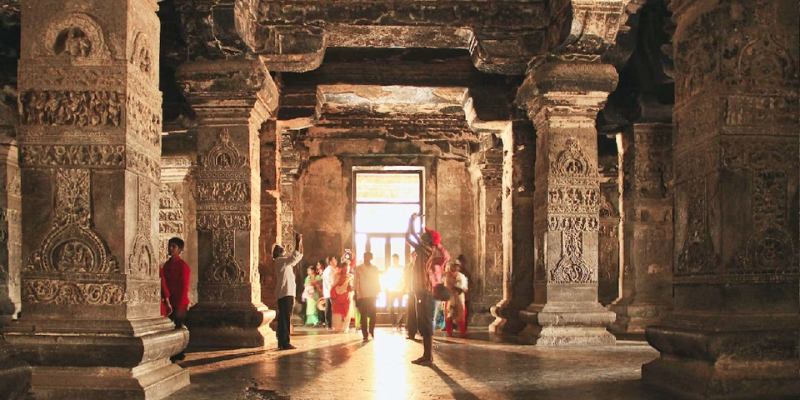India is a country rich in history and culture, and its archaeological sites provide witness to the extensive cultural legacy that has developed over many centuries. India’s ancient treasures provide a window into its varied past and range from exquisite temples and caves carved out of solid rock to spectacular step wells and renowned structures. We at Abir Pothi explore ten outstanding archaeological sites in India in this list, each with its own distinctive architectural features and historical significance. These locations, which include the well-known Taj Mahal and the breathtaking Ellora Caves, highlight the nation’s architectural prowess and cultural variety.
1. Khajuraho Temple
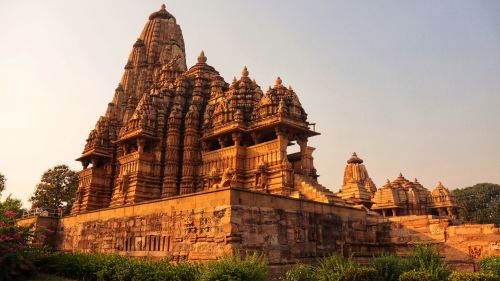
The Chandella dynasty constructed the Khajuraho Group of Monuments between the 10th and 11th centuries CE, and they represent the apex of northern Indian temple design. These 23 sandstone temples are renowned for both their beautiful sculptures that reflect both holy and secular subjects and their distinctive Nagara-style architecture. The site is managed and protected by the Indian government in accordance with different laws and regulations by the Archaeological Survey of India.
2. Dholavira
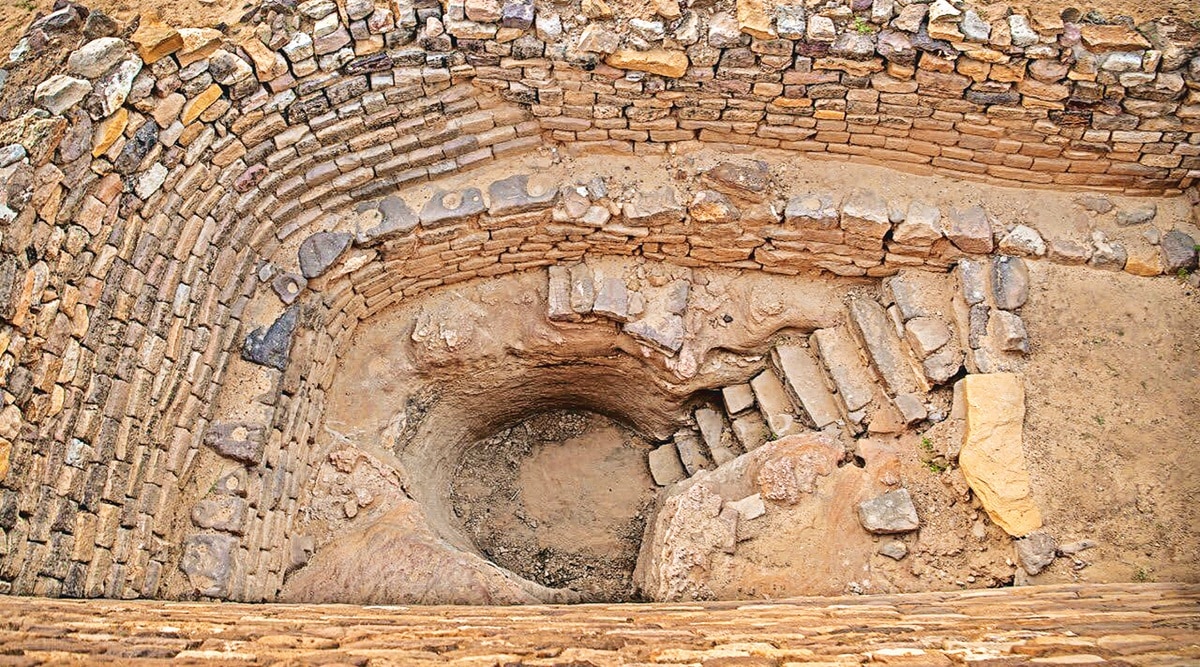
In Gujarat, India, next to the contemporary community of Kotada Timba, there is a notable archaeological site named Dholavira. With a history that begins around 2650 BCE and ends around 2100 BCE, it is one of the biggest and most notable towns of the Indus Valley Civilization. It was momentarily abandoned and then reoccupied until roughly 1450 BCE. The city is separated into three sections: the ruler’s Raj Mahal, fortified districts, and commoners’ brick-built homes. Notably, the location has produced priceless discoveries including copper distilleries and pearl-making factories.
3. Nalanda University

The 23-hectare Nalanda Mahavihara Archaeological Site in Bihar, India, has artefacts from the third century BCE to the thirteenth century CE. It has stupas, chaityas, viharas, and significant artworks, demonstrating the development of design, construction, and artistic concepts in early Indian monastic establishments. Nalanda had an impact on other Mahaviharas in South Asia and continues to serve as an inspiration for contemporary academic institutions.
4. Hampi

In the Indian state of Karnataka’s central region, Hampi, the former capital of the Vijayanagara Empire, is now a massive 4187-hectare archaeological monument. It includes more than 1600 ruins, including urban buildings, forts, palaces, and temples. The Dravidian architectural style, which is characterised by grand proportions and elaborate detailing, is on display at this location. A notable example of this design is the Vitthala temple. The layout of the city, which is surrounded by Dravidian temple complexes, is an example of cutting-edge hydraulic engineering and urban planning. Despite its splendour, Hampi was abandoned and partially destroyed after the Deccan Muslim confederacy defeated the Vijayanagara Empire in the Battle of Talikota in 1565.
5. Konark Sun Temple

The Sun Temple at Konrak, which is located on India’s eastern coast, is a spectacular example of 13th-century temple art and architecture. This temple, which is devoted to the Sun God, is decorated with extravagant representations of modern life and is shaped like the deity’s chariot. It represents the era’s cultural and religious history and is the apex of Kalingan temple construction. The Sun Temple has a direct connection to the spread of the Sun God religion and is closely linked to tantric and Hindu practises. It provides evidence of the historical and aesthetic wealth of Orissa’s monarchy at that time.
6. Ellora Caves
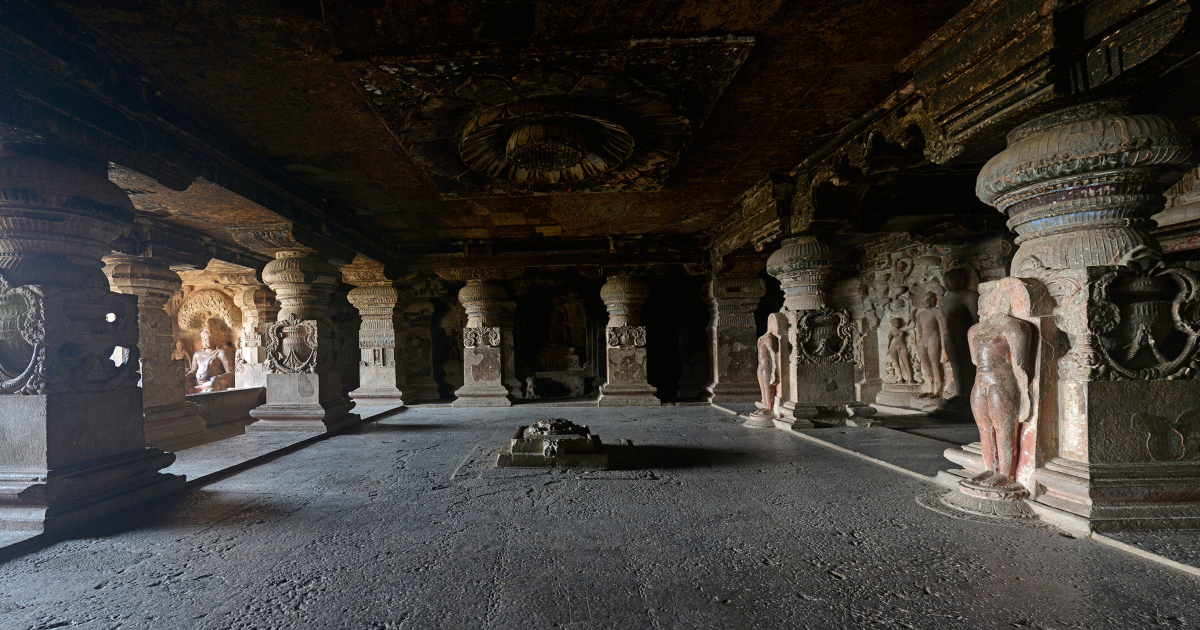
The Ellora Caves, often referred to as “Verul Leni,” are a unique collection of monastic temples carved out of solid rock in Maharashtra, India. The Great Kailasa (Cave 16), the largest single monolithic rock-cut edifice ever created, is a result of their massive excavation, for which they are famed. These caverns have complex carvings and reliefs that were fashioned out of volcanic basalt rock formations. Buddhist, Brahmanic, and Jain caves may be found in Ellora, demonstrating the tolerance and diversity of religions. The caves have a lengthy history of traveller visits, and different kings have taken care of them over the years. In accordance with their interests and free time, visitors can explore caverns that symbolise many artistic and religious traditions.
7. Taj Mahal
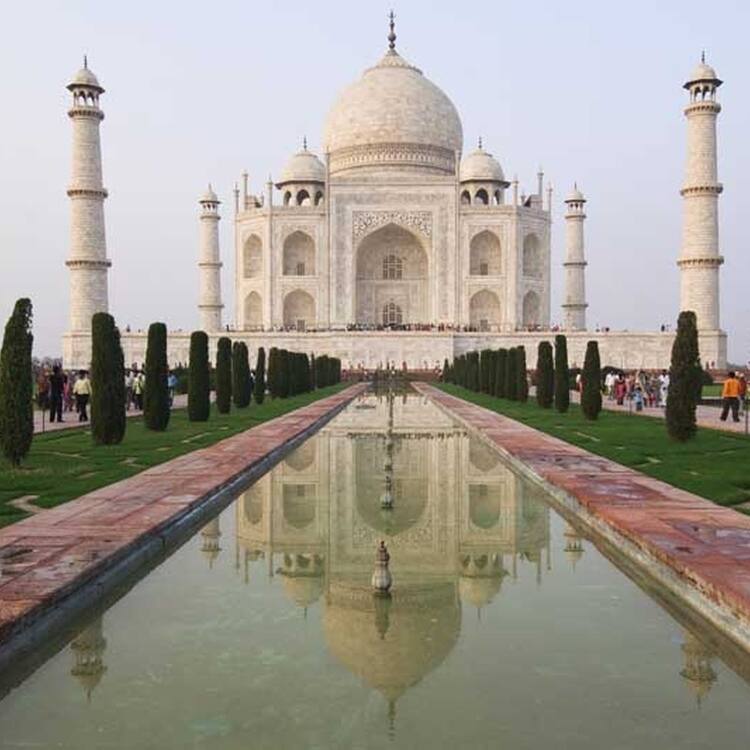
One of the most famous examples of Mughal architecture is the Taj Mahal, which is situated in Agra, Uttar Pradesh, India. It is a mausoleum erected in the 17th century by Emperor Shah Jahan in honour of his wife Mumtaz Mahal. Its unique design, which incorporates solids and voids, arches, domes, and magnificent marble inlay work with precious and semi-precious stones, has earned the monument worldwide acclaim. A mosque and a guest house are on either side of the Taj Mahal, which is situated amid a huge Mughal garden. It is a symbol of architectural and artistic quality that draws tourists from all over the world due to its impeccable symmetry and majestic minarets at the corners.
8. Sanchi Stupa
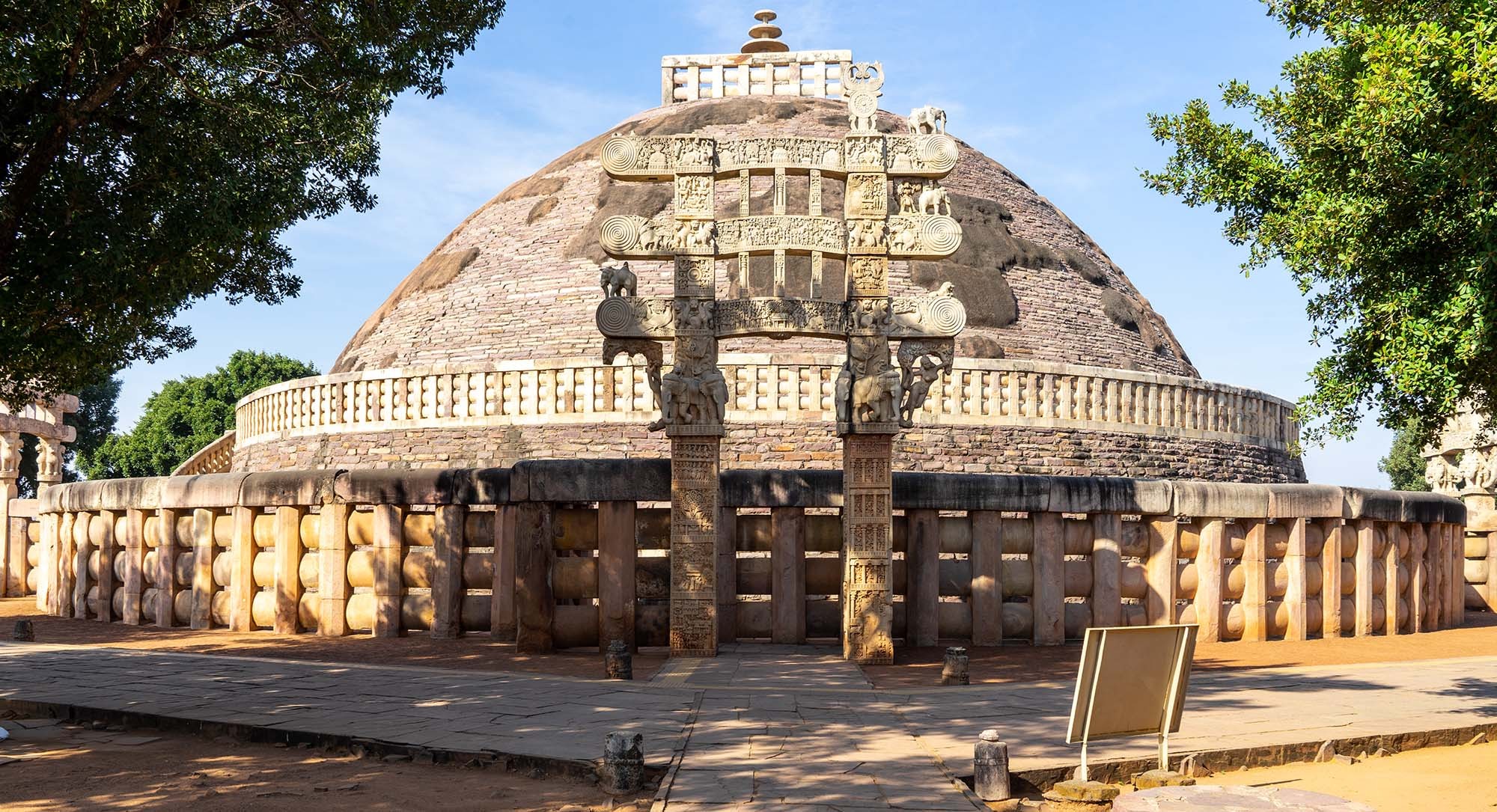
The Buddhist art and architecture at Sanchi, a historic site in India, date from the third century BC to the 12th century AD. The Great Stupa, which served as the centrepiece of a large Buddhist centre, was built at the initiative of Emperor Asoka. The stupa grew over time and was encircled by temples and monasteries as well as elaborate gateways. A number of dynasties, including as the Sungas, Andhra-Satavahanas, and Guptas, added sculptures and buildings to aid in its development. Hindu and Buddhist religions coexisted in Sanchi throughout its history. After being forgotten for decades, it was rediscovered in the 19th century, and Sir John Marshall founded an archaeological museum there in 1919.
9. Rani Ki Vav
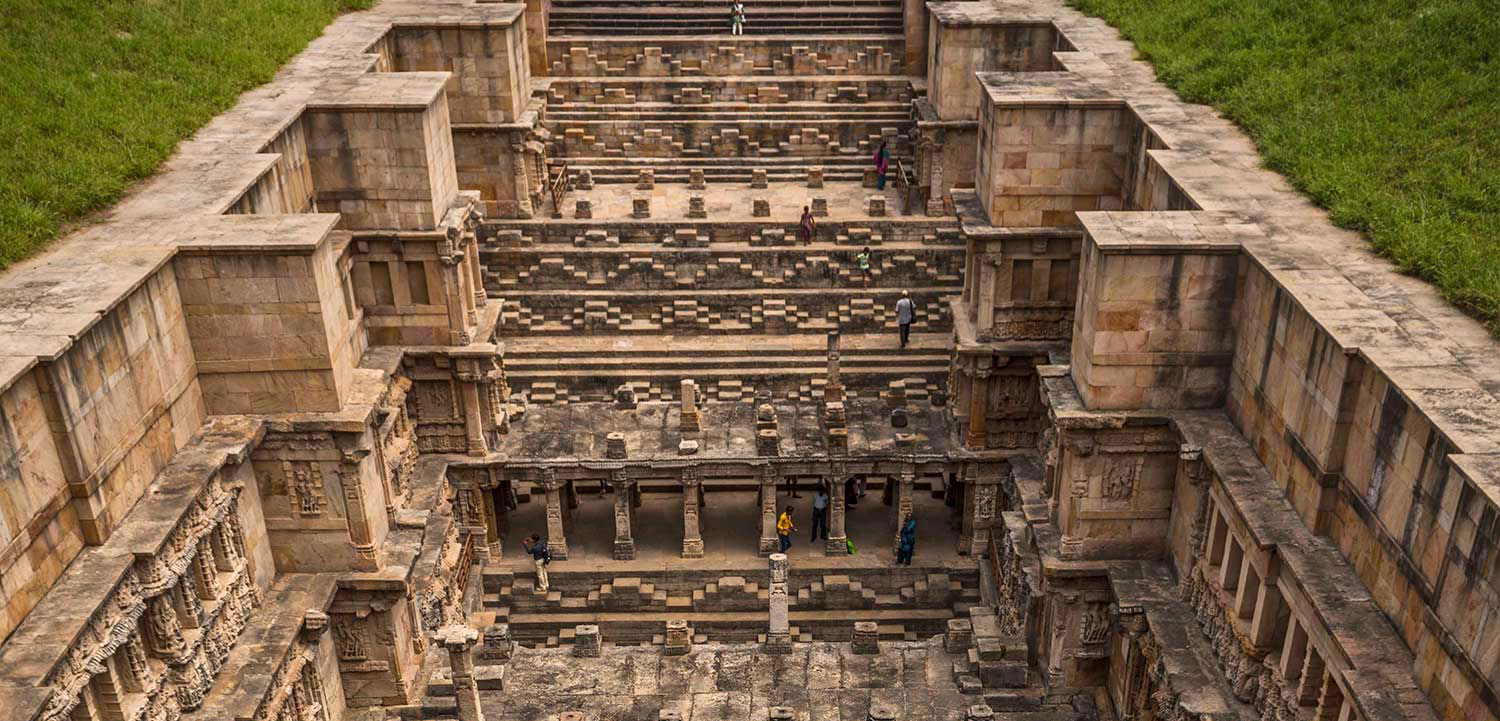
Rani-ki-Vav in Patan, India, is a remarkable example of a stepwell, a type of underground water engineering that is exclusive to the Indian subcontinent. It was initially constructed in the 11th century as a memorial and has both religious and practical uses. The stepwell’s inverted temple-like shape emphasises the holiness of water. It has seven levels of steps, beautifully carved panels, and more than 500 major sculptures in addition to numerous smaller ones. This magnificent building represents the height of stepwell tradition and exhibits skill in craftsmanship and design, making it an amazing architectural landmark. It also boasts remarkable aesthetic and technological achievements.
10. Elephanta Caves
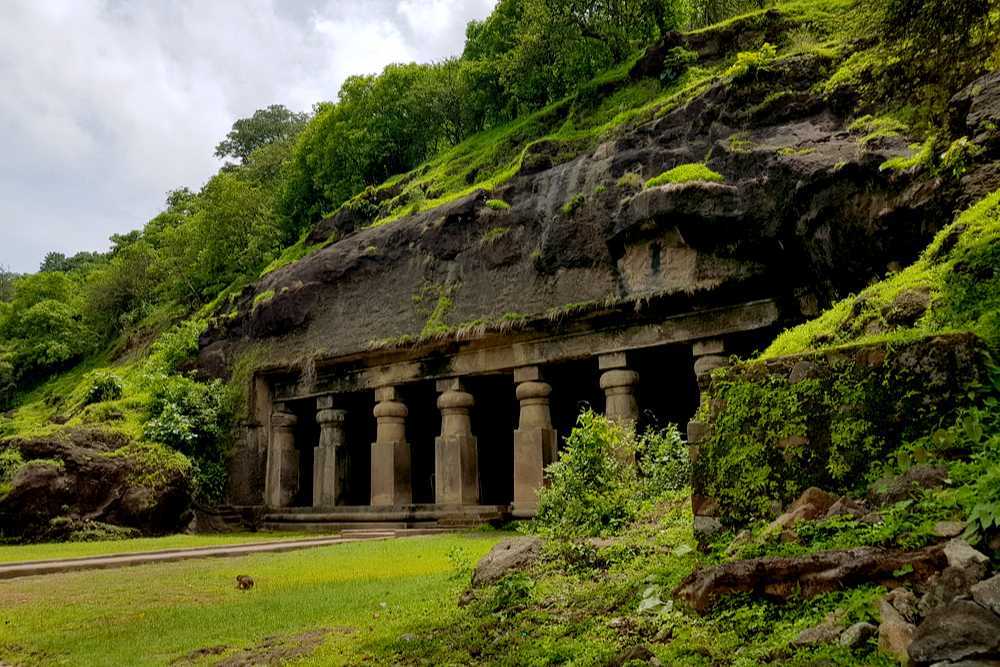
Western India’s Elephanta Island is home to the ancient Elephanta Caves, which date from the middle of the fifth to the sixth century AD. The main cave referred to as Cave 1, is famous for its seven-meter-tall sculpture of “Sadashiva,” which depicts three facets of Shiva. Other noteworthy sculptures include the form- and content-renowned Nataraja, Ardhanarishwara, and Kalyanasundaramurti. The cave arrangement and design advancements, together with the mix of aesthetic beauty and sculptural art, make the Elephanta Caves a pinnacle of rock-cut architecture. These caverns serve as a witness to the creative and spiritual significance of Hindu civilization.
Read Also:

Vaishnavi Srivastava is a learning writer, a keen researcher and a literature enthusiast. She is a Sub-editor at Abir Pothi.

